Please see Network Redesign – ProGranite alongside this post.
Summary: Transformed a poorly managed, unstable network into a clean, reliable, and future-proof infrastructure by introducing new hardware, structured cabling, and subnetting.
System as I Found It
When I first assessed the ProGranite network, it was in a neglected and unmanaged state:
-
No router credentials or administrative access.
-
No monitoring or logs.
-
No UPS for power protection.
-
Excessively long yellow patch cables, creating a tangled mess.
-
Three unmanaged Layer 1 switches chained together.
-
Single subnet across the entire company.
-
Even local-to-local pings failed intermittently.
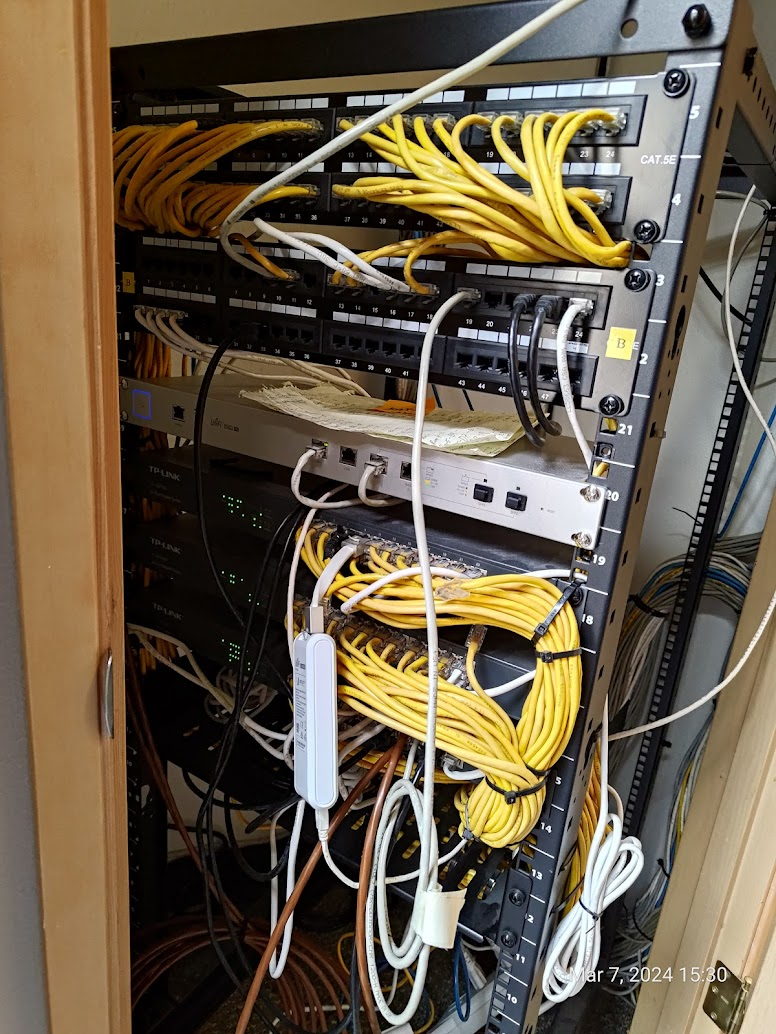
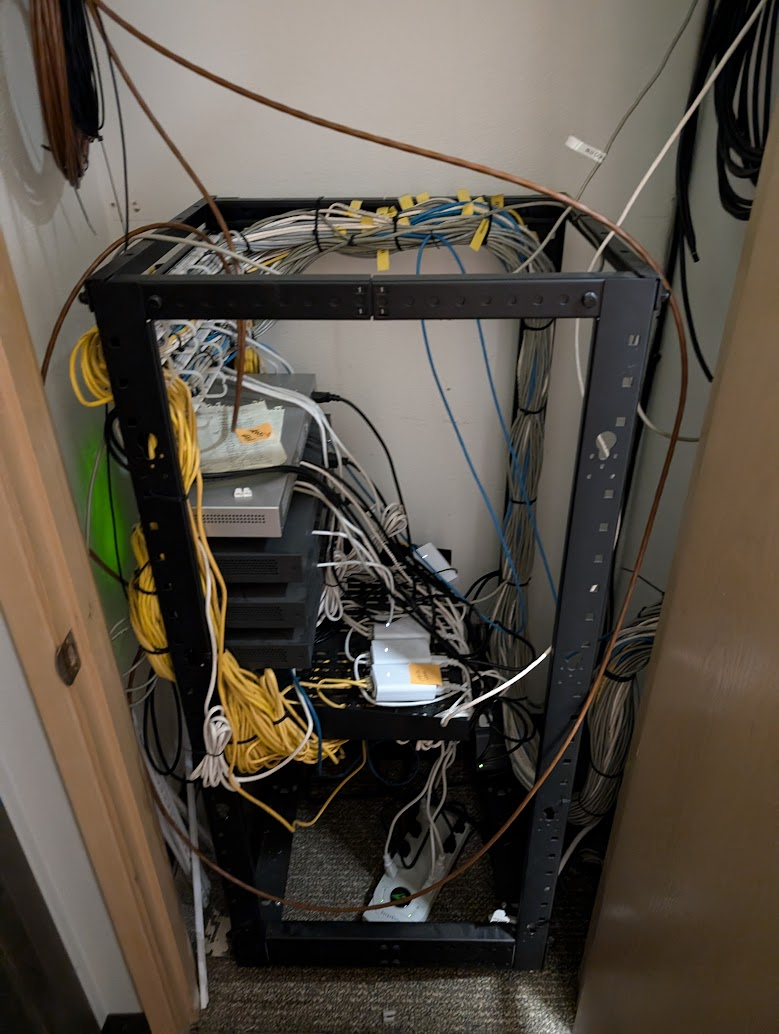
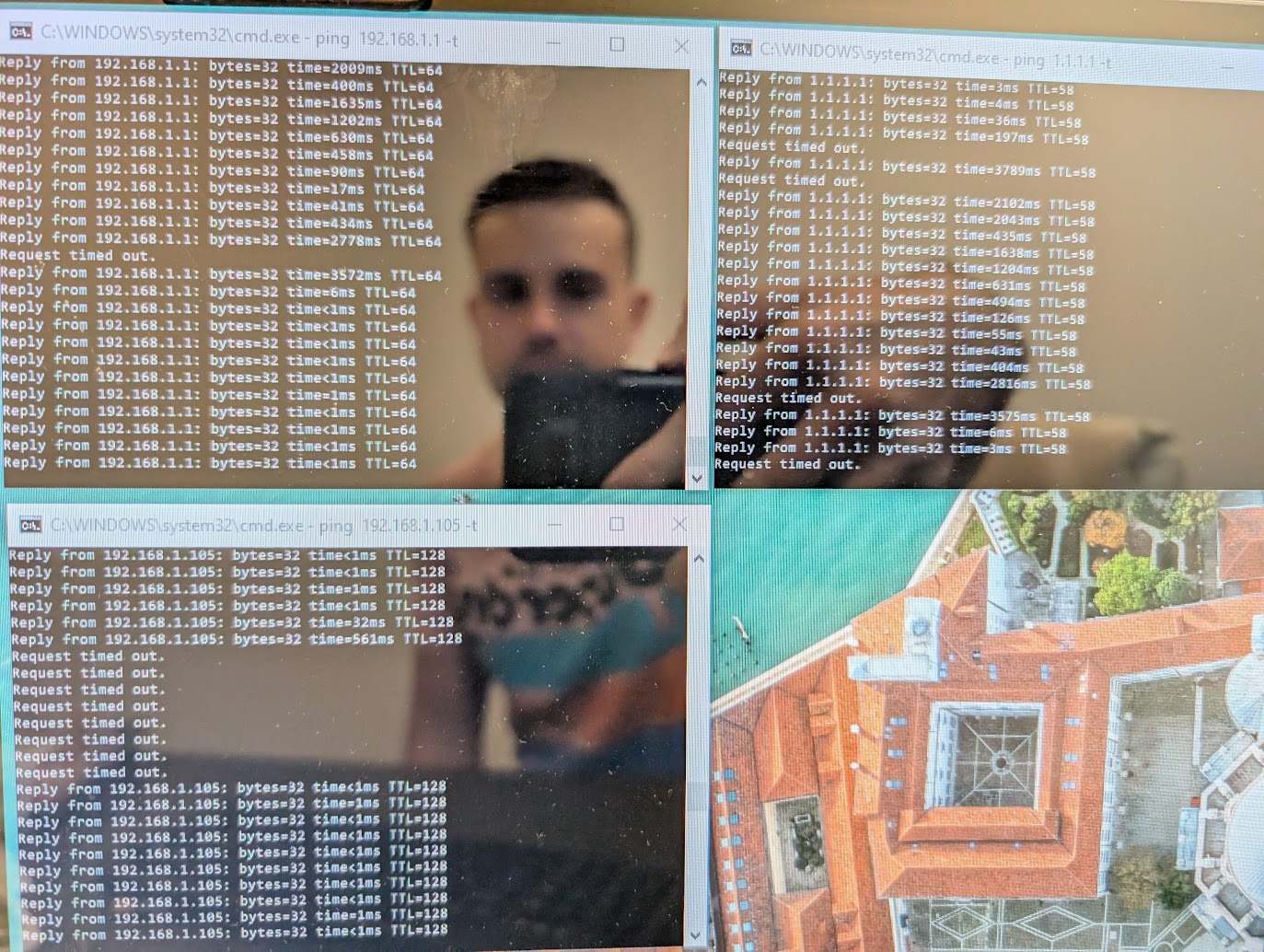
Initial Attempts
Installing a UPS provided power protection but did not solve connectivity issues.
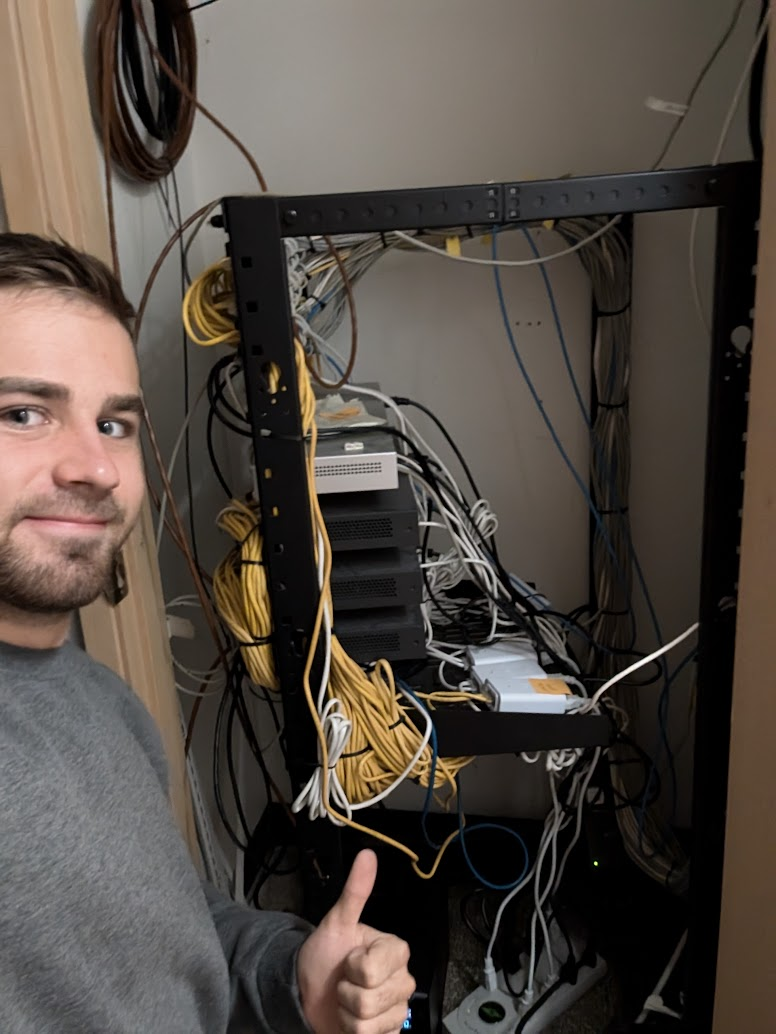
New Router & Temporary Fix
I ordered and deployed a new router. To restore operations quickly, I connected a temporary Netgear Layer 1 switch and configured only the most critical devices. This provided partial stability.
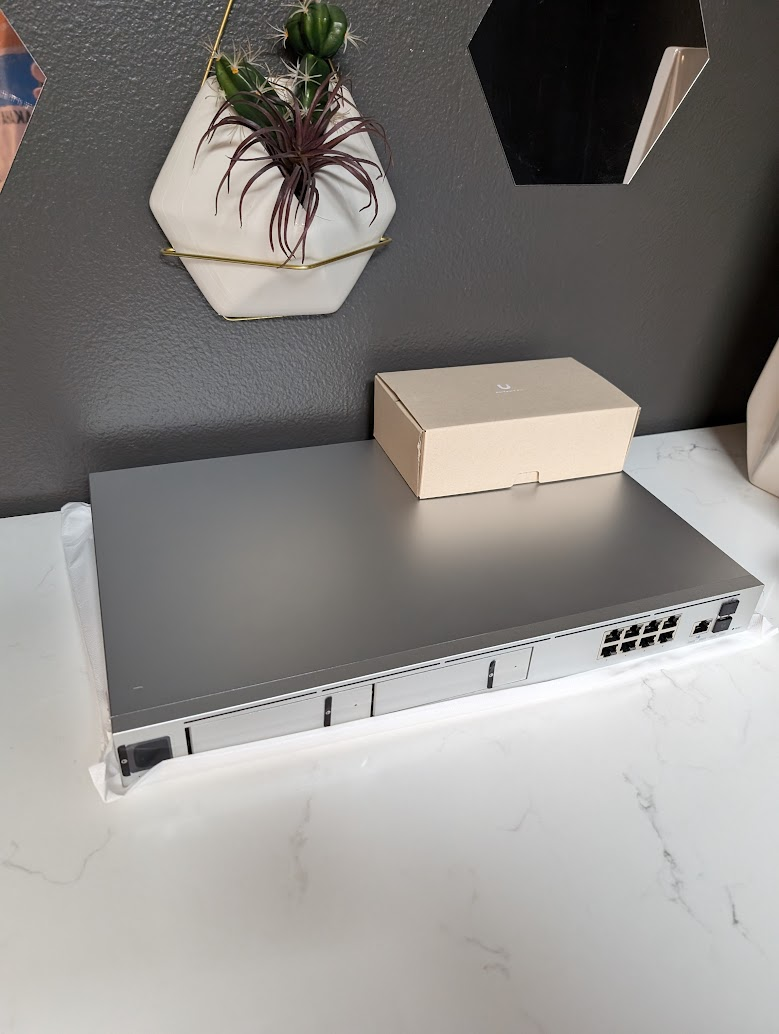
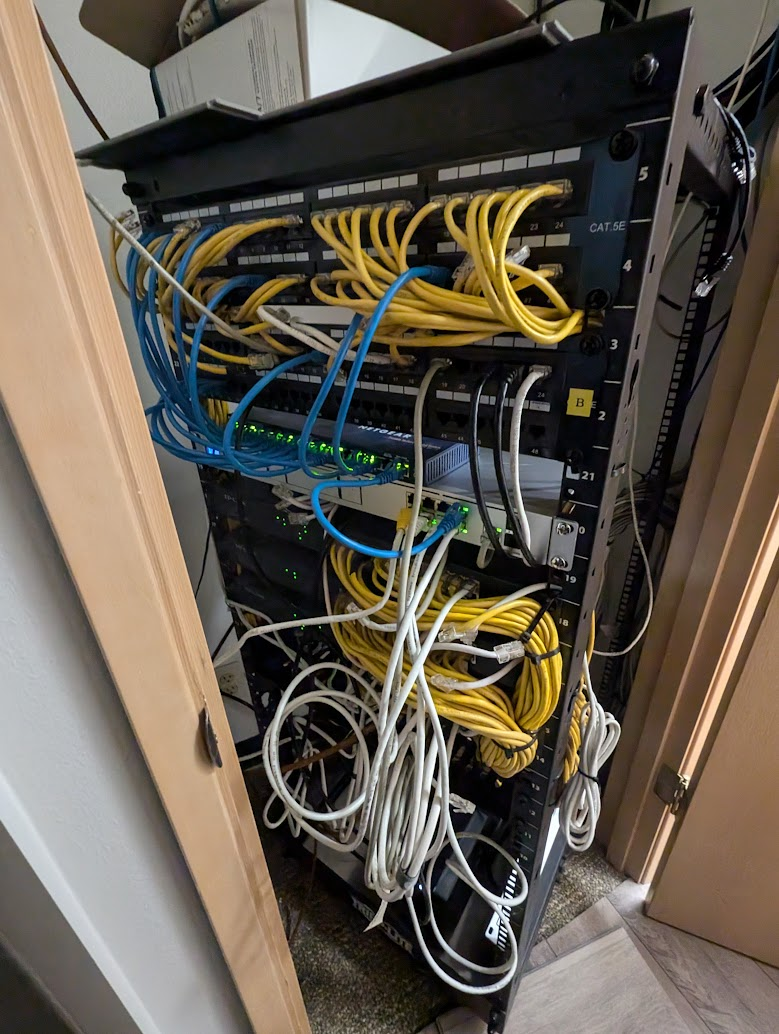
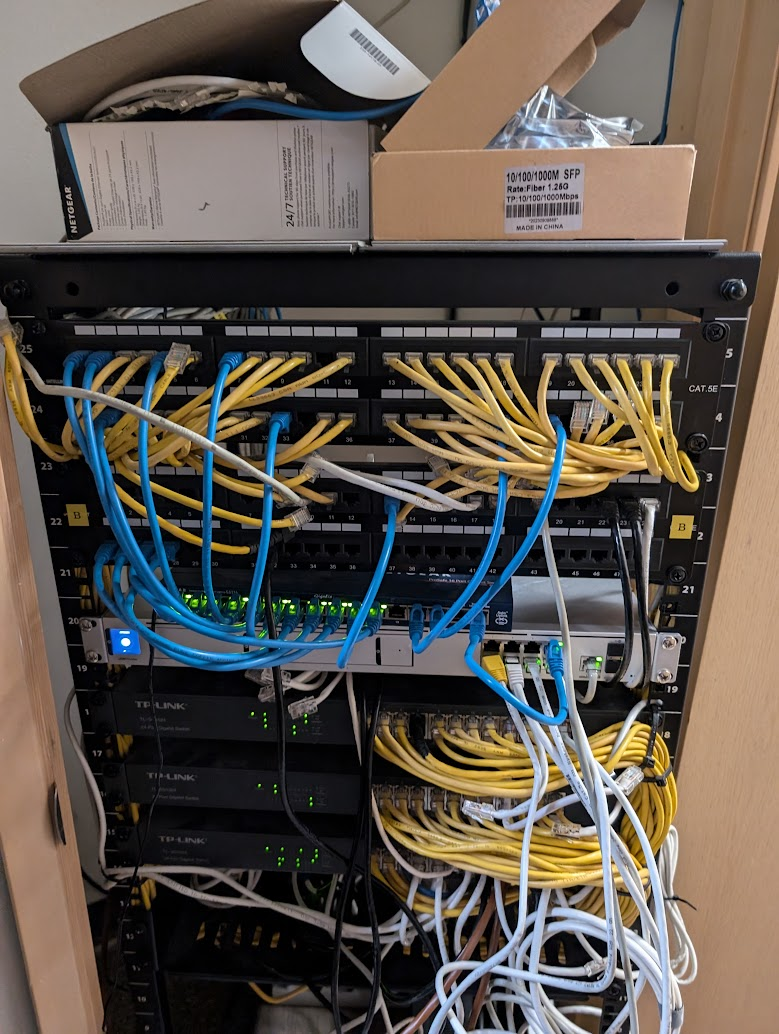
Rewiring Project
I began a full recabling effort:
-
Removed excessive yellow cabling and outdated hardware.
-
Installed a new 48-port Unifi Layer 3 switch.
-
Replaced with shorter, properly labeled patch panels.
-
Added a PoE switch to power cameras and simplify the rack.

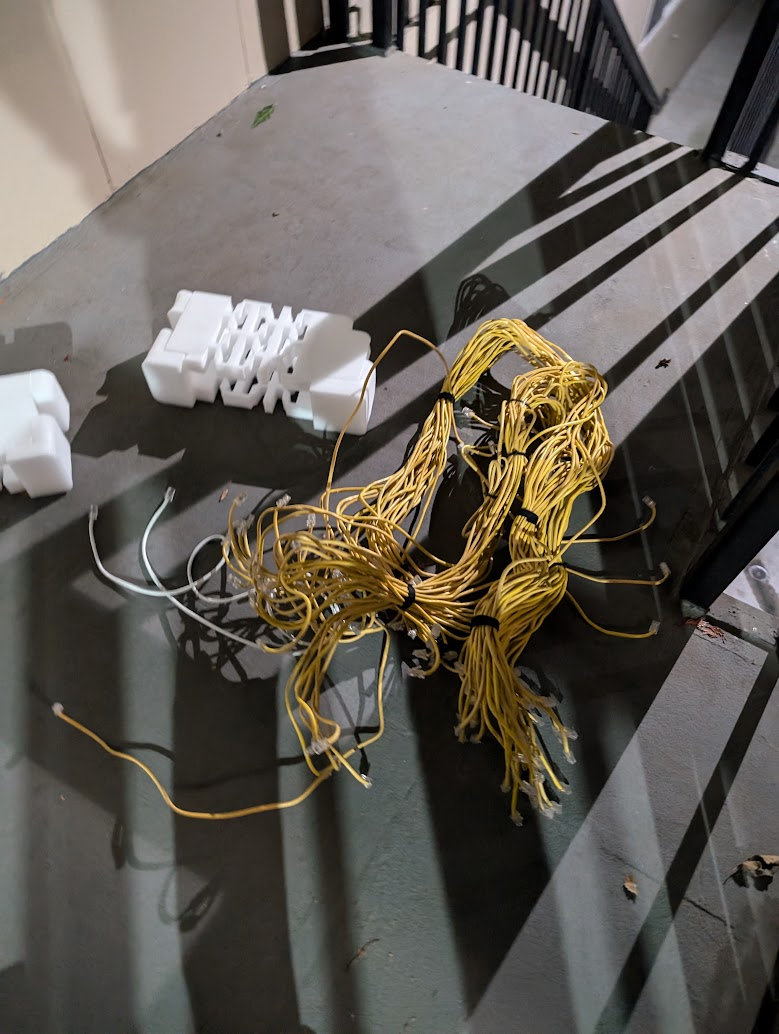
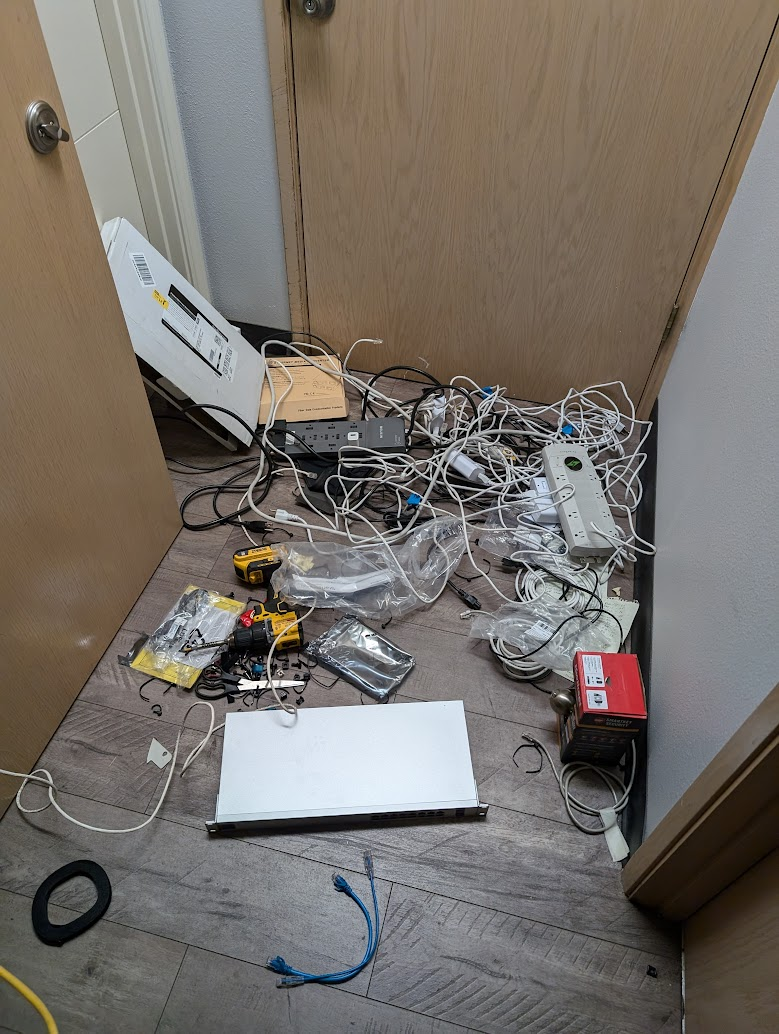
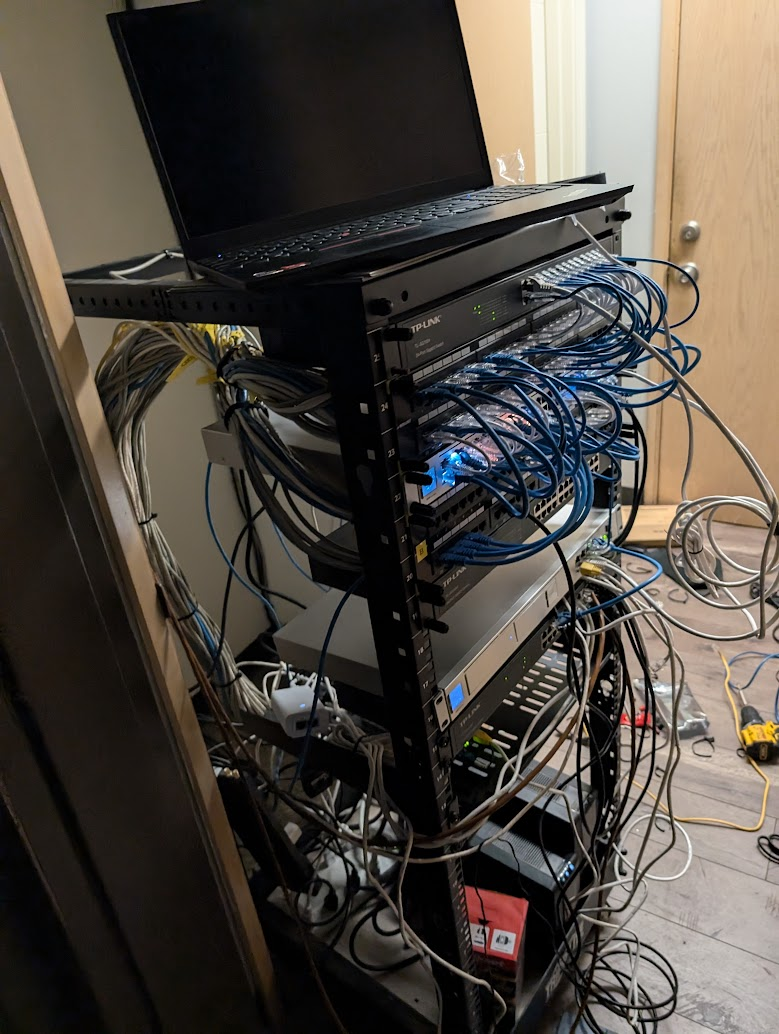
Network Improvements
-
Established three subnets:
-
Guest WiFi
-
Main Subnet
-
Personal homelab (with port forwarding for services)
-
-
Configured inter-subnet firewall rules and port forwarding.
-
Added vents to the network closet door.
Finished State
The result was a clean, organized rack with professional cabling and modern Unifi hardware:
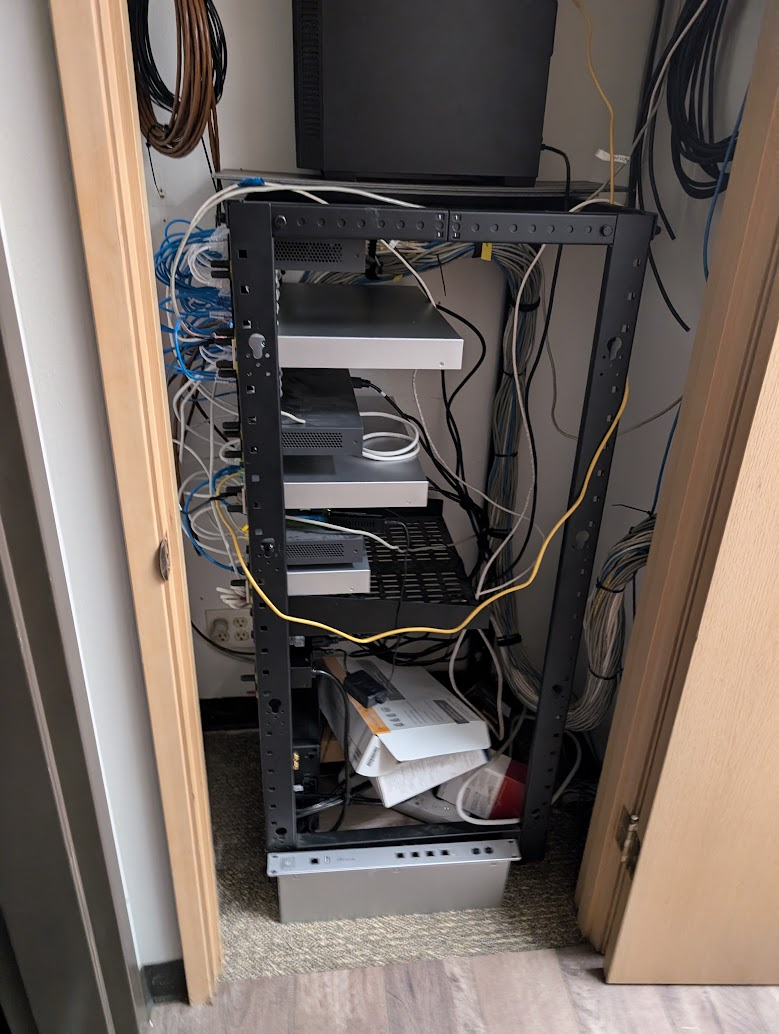
The PC on top ran my services on a separate subnet, later relocated outside the closet for cooling.
Results
-
Transformed a fragile, unmanaged network into a stable, structured system.
-
Improved reliability and scalability with Layer 3 switching.
-
Introduced subnetting for security and performance.
-
Set up power redundancy with UPS and improved physical airflow.
Skills Demonstrated
-
Networking: Router and switch deployment, subnetting, firewall rules.
-
Infrastructure: Rack rewiring, patch panel management, PoE integration.
-
Problem-Solving: Migrated from unmanaged, undocumented infrastructure to a structured, future-proof design.
-
Leadership: Took ownership of a network nobody previously managed and established best practices.
Lessons Learned
-
Documentation and access control are as important as hardware.
-
Clean cabling isn’t cosmetic — it reduces downtime and makes troubleshooting easier.
-
Subnetting and L3 switching increase both security and performance.
-
Infrastructure projects require balancing immediate fixes with long-term vision.